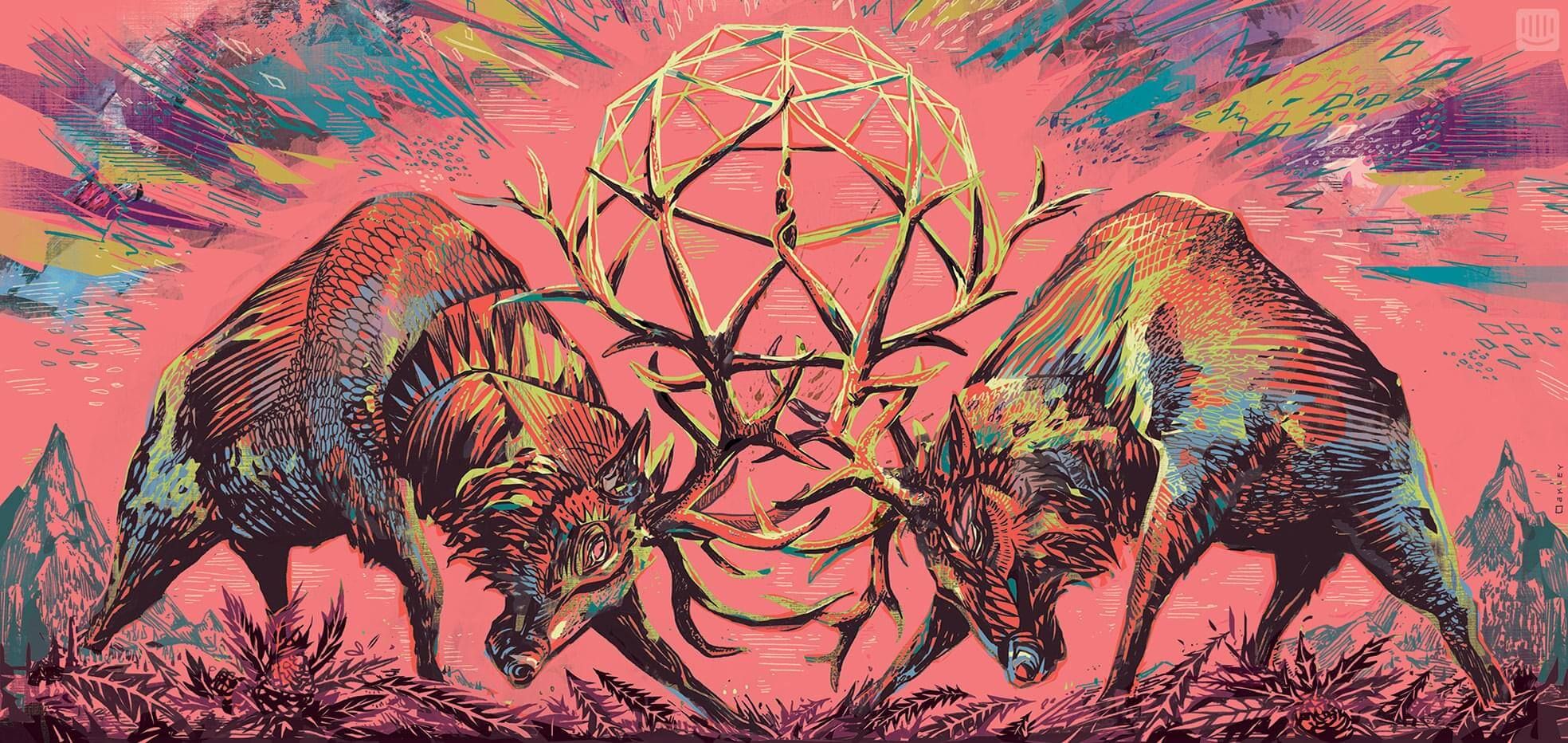
Healthy tension in product teams
Main illustration: Jacqui Oakley
Product teams are made up of a mess of human emotions and motivations, but well-functioning teams can reduce that tension into simple competing forces that make them stronger. We should be encouraging it as an essential part of a team’s success.
Tension in a team isn’t just healthy, it’s essential
In my work as a design manager, I’ve been thinking a lot about triangles. Most problems we run into when developing our product, I’ve noticed, can be expressed as a simple triangle — many-faceted, pointy, and potentially hazardous if you just grab them without thinking, but if you try hard many of them can be reduced to a trio of competing factors.
You’ve probably heard the famous one about project planning: Good, fast, cheap. Pick two.
Simple problems can be expressed in more binary terms. Yes or no; launch or iterate; quit or forge on. But complex problems, even if you push on them really hard, retain some element of fuzzy, grey, self-contradiction. They can never be fully resolved into just this or that. They always seem to end up being triangles.
Strength through tension

A geodesic dome, if you don’t know, is a structure of interlocking triangles (or sometimes polygons) that was popularized by Buckminster Fuller back in the 1950s, and adopted by the Bay Area counterculture set as their ideal of a well engineered, algorithmically beautiful, efficient building. Turns out hippies love domes. But they also love simplicity: many of these hippies applied the same principles of pattern and modularity to the early personal computers that they went on to create.
You can make domes out of anything — wood, steel, cardboard — and in many different formations, but the fascinating thing about these domes is that when assembled correctly they have incredible tensional integrity; Bucky coined it “tensegrity”. A small dome can bear the weight of several people easily and the shape is volumetrically efficient. Simply by arranging the struts in the correct relation to each other, something much stronger and bigger than its individual parts can be created. Each part pushes and pulls against the others in such a way that creates something incredibly effective. But this only works because the specific arrangement provides that tension.
Conflict is good

Exceptional teams are made up of people that reach into the roles of their colleagues
This is most obvious in the usual triumvirate of product teams: Designer, Product Manager, and Engineers. Each of these roles correctly have different skills, perspectives, and motivations. A good designer wants an elegant, polished solution. A good PM wants to solve the right problem and optimize for speed. A good engineer wants an implementation that’s maintainable and efficient. These people are good at what they do.
Good, but not necessarily great.
Exceptional teams are made up of individuals who reach out beyond the traditional boundaries of their own role, and into the roles of their colleagues. A great designer should be involved in roadmap planning. A great PM cares deeply about implementation details. A great engineer wants to create something beautiful. They hold each other accountable to each other’s responsibilities.
Sometimes this can involve pushing against one another. “I don’t think that’s good enough,” they’ll tell each other. “I know we can do something better here.”
This can often involve presenting your colleague and friend with some honest truths. Egos need to be checked, and trust becomes paramount. But a mature, well-functioning, collaborative team is plenty capable of doing this. As a group, they’re not happy to sign their name to something unless they think it’s great, in every regard. They push and pull each other towards greatness. They hold each other up.
The right amount of tension
Tension in a team isn’t just healthy, it’s essential. Without the three points of Design, PM, and Engineering acting against each other the structure becomes unstable. It loses its integrity and can collapse under a heavy load.
But the right amount of healthy tension can create a team capable of resolving complex problems while remaining wonderfully strong.








